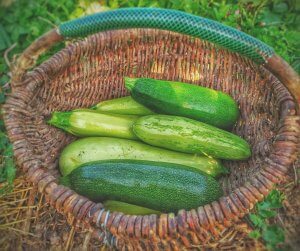What is the best Zucchini substitute?
Are you looking for a zucchini substitute? Zucchini is a versatile vegetable, and while there are several options for substitutes, the best one depends on the specific recipe you are preparing. Try using Squash, Cucumber, Eggplant, Carrot, Apple, Celery, Beetroot, Parlsey, Bell Peppers, or Sweet Potato.
Remember, while these substitutes can work in various dishes, each one brings its own flavor and texture to the recipe. Experimentation is key, so feel free to try different options to see which one suits your tastes and preferences best.
What are Zucchinis?
Zucchini, also known as courgette, is a summer squash vegetable which generally grows from May to October. It is part of the gourd family and is related to other squashes, such as pumpkin and butternut squash. Zucchini is a popular and versatile vegetable in many cuisines around the world.
Zucchini has a smooth, dark green skin and a tender, creamy-white flesh with small edible seeds in the center. It has a mild, slightly sweet flavor and a firm, yet tender texture when cooked. The young and small zucchinis are more tender and are often preferred for their delicate taste and ease of preparation. Sometimes the flavor can be a bit bland, but by adding additional spices and herbs into your recipe you can boost the flavor profile.
One of the reasons for its popularity is its versatility in the kitchen. Zucchini can be prepared and enjoyed in various ways, including:
- Sautéed or stir-fried: Slicing or dicing zucchini and quickly cooking it in a pan with some oil, garlic, and seasonings.
- Grilled: Zucchini can be sliced lengthwise and grilled, giving it a delicious smoky flavor.
- Baked or roasted: Zucchini can be roasted in the oven with other vegetables or used in gratins and casseroles.
- Stuffed: Zucchini can be hollowed out and filled with a mixture of meat, rice, or other vegetables, then baked until tender.
- Raw: Zucchini can be shaved or spiralized to create “zoodles,” which are a popular low-carb alternative to pasta.
- Soups and stews: Zucchini can be added to various soups and stews, providing a nutritious addition to the dish.
Did you know that zucchini is not only a versatile ingredient but also a healthy one too? It is low in calories and a good source of essential nutrients like vitamins A and C. It is also a good source of potassium, and dietary fiber.
In many regions, zucchinis are readily available during the summer months when they are in season. They can be found in grocery stores and farmers’ markets, and their popularity has led to many zucchini varieties being cultivated around the world.
Okay, before we look at your zucchini substitute options, let’s deal with that empty cupboard situation!
Where can I buy Zucchinis?
If you want to be more prepared and ensure you don’t run out of zuchinni then you should stock up now.
Nowadays most delicatessens and general supermarkets stock a wide variety of fresh zuchinnis. But we have decided to give you a link so you can grow your own.
If you plant the seeds over a couple of weeks you will always have a ready supply of fresh zucchini. So why not jump on and place your order today?
STOCK UP NOW!
Burpee Black Beauty Zucchini seeds
Delicious creamy flesh which great flavor. Fast germination.
These organic seeds are certified USDA, Non-GMO, Heirloom Seeds
What can I substitute for Zucchinis?
Here are some of the best ingredients to substitute the flavor and role that zucchini provides in your recipes.
- Squash
- Cucumber
- Eggplant
- Carrot
- Apple
- Celery
- Beetroot
- Parsley
- Bell Peppers
- Sweet Potato
Zucchini substitutes
Squash
Substituting squash for zucchini, is generally easy since both vegetables belong to the same family. They also have a similar taste and texture. Here’s how you can substitute squash for zucchini in your recipes:
- Choose the Right Type of Squash: Look for a type of squash that closely resembles the zucchini you would normally use in the recipe. Yellow squash is the most common substitute for green zucchini since they have a similar taste and texture. You can also use other summer squashes like pattypan squash or crookneck squash.
- Adjust Cooking Time: Different types of squash may have slightly different cooking times due to variations in moisture content and density. It’s best to keep an eye on the squash while cooking and adjust the cooking time accordingly. The goal is to achieve the desired tenderness or firmness depending on the recipe.
- Preparation: Just like zucchini, you can slice, dice, grate, or spiralize squash depending on the recipe requirements. For recipes where the appearance matters, try to choose a squash variety that has a similar shape to zucchini.
- Flavor: Squash has a mild and slightly sweet flavor, just like zucchini, so the taste should not be significantly different when used as a substitute.
- Nutrition: From a nutritional perspective, yellow squash is quite similar to zucchini, offering vitamins A and C. It also provides fiber and other essential nutrients.
- Specific Recipes: While squash is a great substitute for zucchini in most recipes, there might be certain dishes where the unique texture or taste of zucchini is important. For example, in recipes like zucchini bread, the moisture content of zucchini can affect the final result. If this is the case you might want to stick to using zucchini in such cases.
Remember, substituting squash for zucchini is generally an easy swap. You can use it in various recipes, including stir-fries, sautés, soups, casseroles, and more.
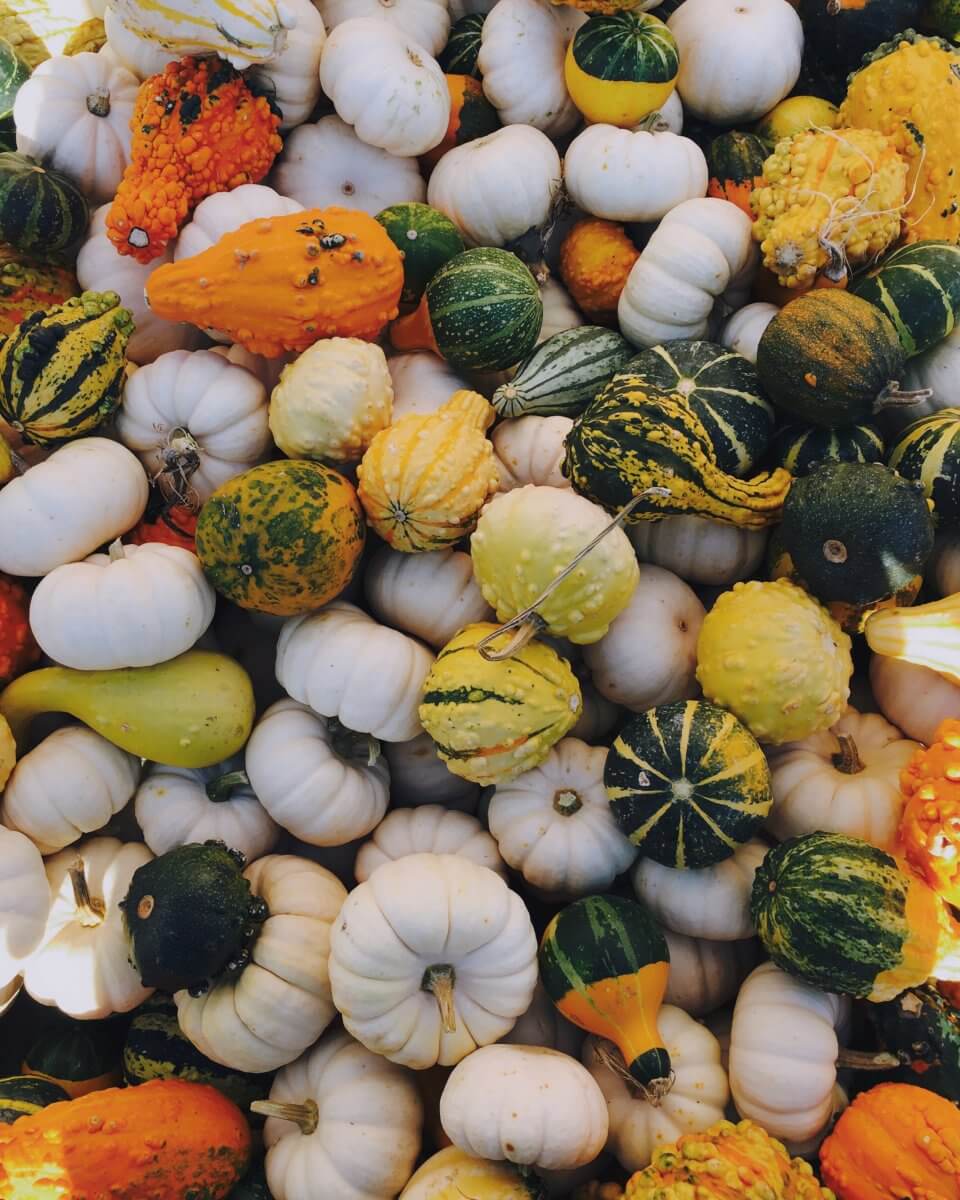
Cucumber
While cucumber can be used as a substitute for zucchini in certain dishes, it’s important to keep in mind that the two vegetables have different textures and flavors. Cucumber is generally more watery and has a distinct refreshing taste, while zucchini has a milder, slightly sweet flavor and a firmer texture when cooked. Here are some tips on how to substitute cucumber for zucchini:
- Raw Dishes: In dishes where zucchini is used raw, such as salads or cold appetizers, cucumber can be a good substitute. It will add a similar crunchy and refreshing element to the dish.
- Cooked Dishes: In cooked dishes like stir-fries or sautés, cucumber can be used as a substitute for zucchini, but keep in mind that it will cook faster and become softer due to its higher water content. Try to add cucumber towards the end of cooking to avoid overcooking.
- Adjusting the Seasonings: Since cucumber has a milder taste than zucchini, you may need to adjust the seasonings and flavors in the recipe. Be mindful of this, especially in dishes where the zucchini plays a significant flavor role.
- Texture Considerations: Cucumber can become mushy when cooked for too long, so be cautious when using it as a zucchini substitute in recipes that require a firmer texture. If the recipe calls for zucchini to hold its shape, cucumber may not be the best substitute.
- Consider the Peeling: If you use cucumber as a zucchini substitute, you might want to peel it before cooking or using it in the recipe. Cucumber skin can be slightly tough, and some recipes might not benefit from its presence.
While cucumber can work as a zucchini substitute in certain situations, it’s essential to be aware of the differences in texture and taste. When experimenting with substitutions, consider the specific dish you’re making and whether cucumber’s properties will complement or suit the flavors and textures of the recipe.
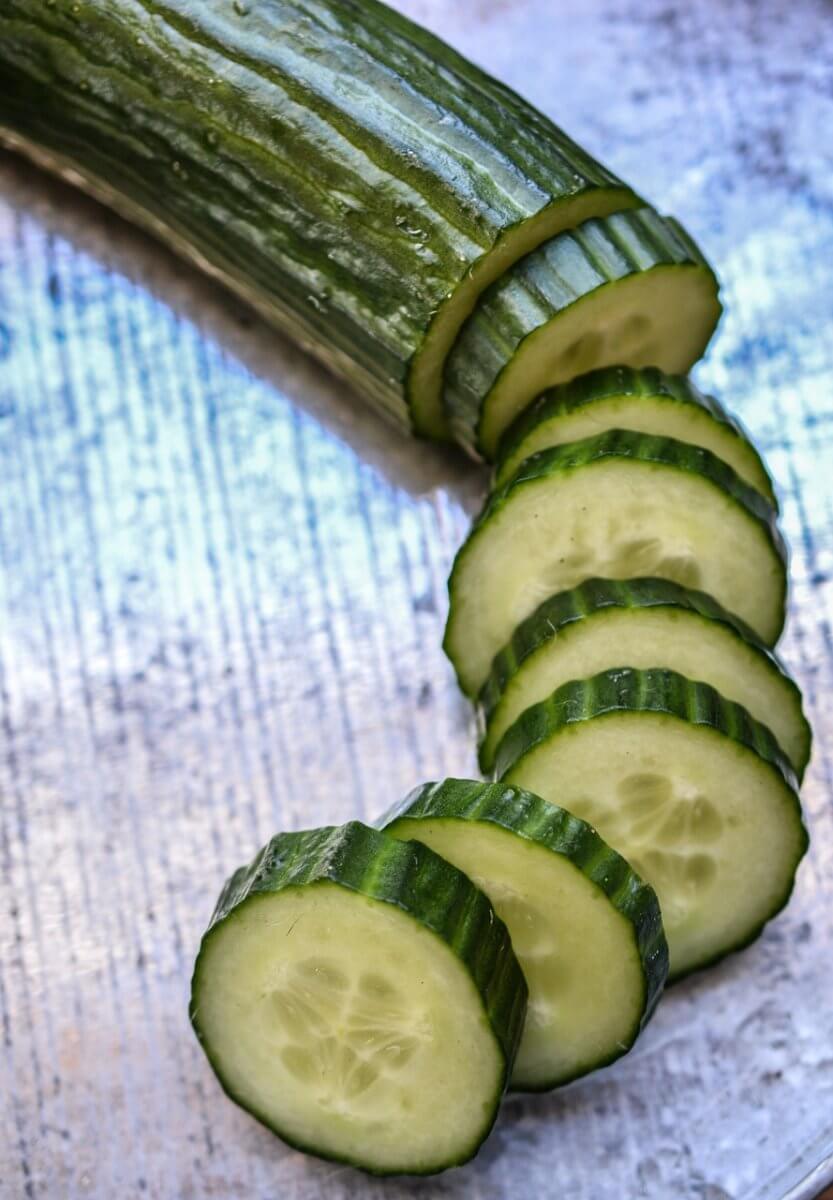
Eggplant (Aubergine)
Substituting eggplant, also known as aubergine, for zucchini can work well in many cooked dishes, as they share some similarities in texture when cooked. However, it’s essential to consider the flavor differences between the two vegetables. Eggplant has a more pronounced earthy and slightly bitter taste compared to the milder flavor of zucchini. Here are some tips on how to substitute eggplant for zucchini:
- Cooking Methods: Eggplant can be used as a zucchini substitute in various cooking methods, such as grilling, roasting, sautéing, and stir-frying. It becomes tender when cooked, just like zucchini.
- Adjusting Flavors: Keep in mind that eggplant has a distinct flavor, so you may need to adjust the seasonings or flavors in the recipe to accommodate the earthy taste of eggplant. Consider using more herbs, spices, or seasonings to complement the eggplant.
- Ratios: When substituting eggplant for zucchini, consider the size difference between the two vegetables. You might need to adjust the quantity of eggplant to match the volume of zucchini required in the recipe.
- Skin: Unlike zucchini, eggplant has a thicker skin that can be slightly tough when cooked. Depending on the recipe, you may choose to peel the eggplant before using it as a substitute for zucchini.
- Baking and Stuffing: Eggplant can be used in baked dishes and stuffed recipes, just like zucchini. For example, you can make stuffed eggplant boats in place of stuffed zucchini.
- Eggplant “Noodles”: If you’re looking for a low-carb alternative to zucchini noodles, you can use a spiralizer to make eggplant “noodles.” However, keep in mind that eggplant noodles may have a slightly different texture and taste compared to zucchini noodles.
- Combining with Zucchini: If you have both eggplant and zucchini, you can use a combination of the two in some recipes. This can add variety to the dish and balance out the flavors.
Overall, eggplant can be a flavorful and suitable substitute for zucchini in many cooked dishes. Just be mindful of the taste differences and adapt your seasonings accordingly. Feel free to experiment and enjoy the unique flavors that eggplant brings to your recipes.
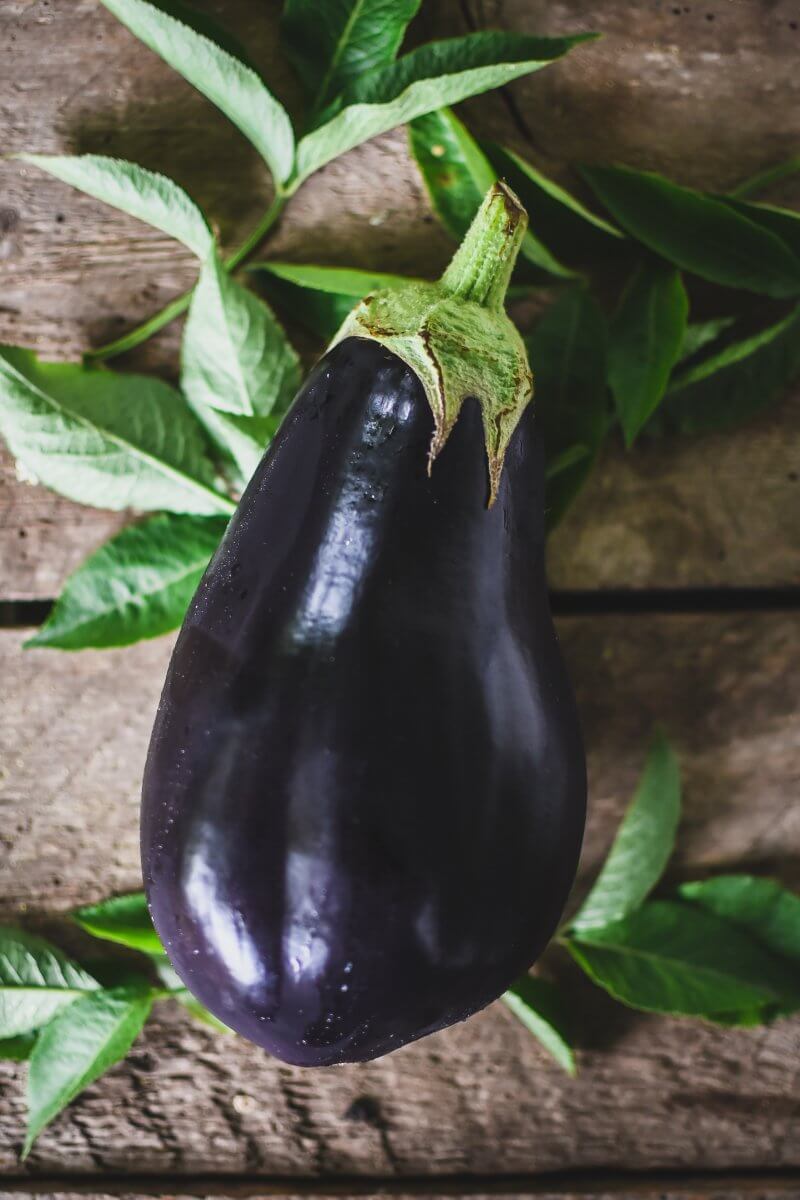
Carrot
Substituting carrots for zucchini can work in certain recipes, especially in dishes where the vegetables are cooked or used as fillings. However, keep in mind that carrots have a sweeter and firmer texture compared to zucchini. Here are some tips on how to substitute carrots for zucchini:
- Cooking Methods: Carrots can be used as a zucchini substitute in various cooking methods, such as sautéing, stir-frying, and roasting. They will retain their crunchy texture when cooked.
- Flavor and Sweetness: Carrots have a sweeter flavor compared to zucchini, which has a milder taste. When using carrots as a substitute, be aware that the dish may have a slightly sweeter profile.
- Ratios: Consider the size and density difference between carrots and zucchini. You may need to adjust the quantity of carrots to match the volume of zucchini required in the recipe.
- Appearance: Carrots can add a vibrant orange color to the dish, which might be visually appealing. If the appearance is essential for the recipe, carrots can be an attractive substitute for zucchini.
- Texture Considerations: Carrots will have a firmer texture compared to zucchini when cooked. This can be desirable in some recipes, but if the recipe requires zucchini’s softer texture, carrots may not be the best substitute.
- Grating or Slicing: In recipes where zucchini is grated or sliced, you can use a similar technique with carrots. For example, you can make carrot ribbons or use a grater to create carrot shreds for certain dishes.
- Combination: If you have both carrots and zucchini on hand, you can use a combination of the two vegetables to add variety to the dish.
It’s important to be mindful of the flavor and texture differences between carrots and zucchini when using carrots as a substitute. In some recipes, such as zucchini bread or zucchini noodles, the sweetness and firmer texture of carrots may significantly alter the final result. In such cases, it might be best to use zucchini or explore other zucchini substitutes, like yellow squash or eggplant, that have closer similarities to zucchini’s taste and texture.
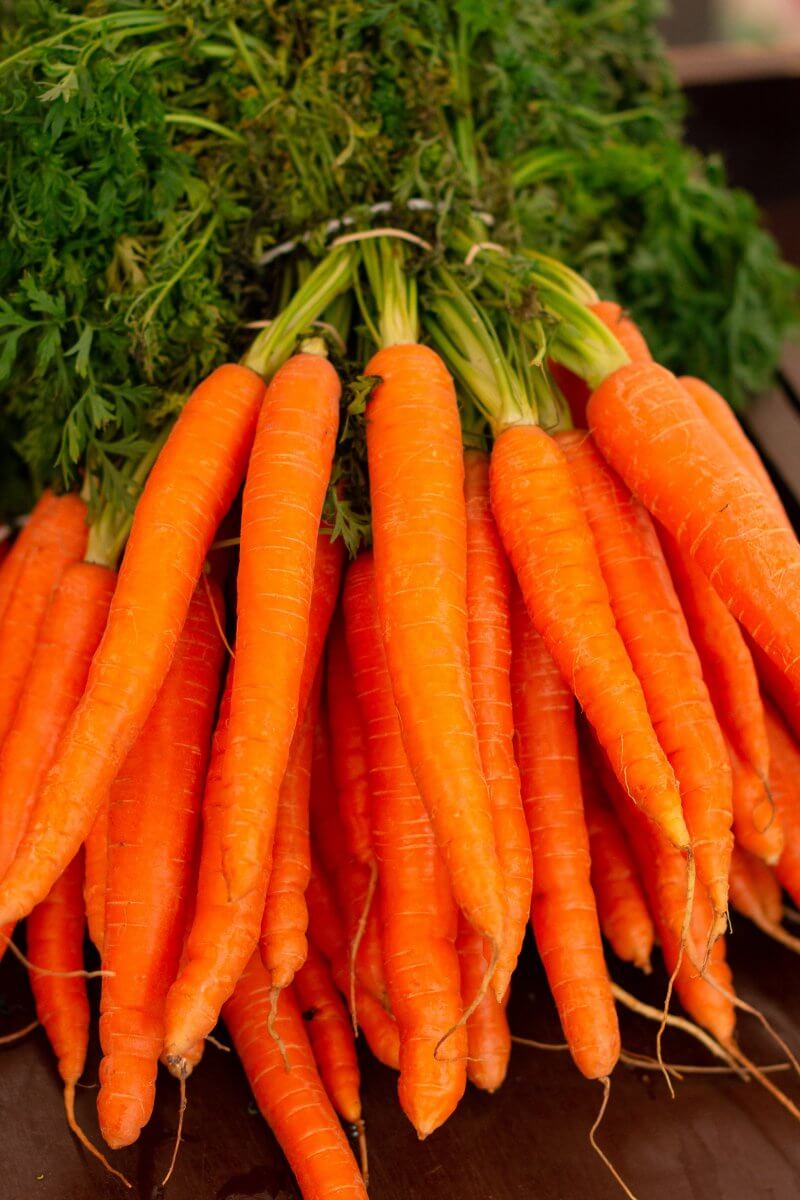
Apple
Substituting apple for zucchini is not a common substitution as the two have significantly different flavors and textures. Zucchini is a mild-tasting vegetable with a tender texture when cooked, while apples have a sweet and crunchy taste. However, in certain baked goods, you can use grated or finely chopped apples as a creative alternative to zucchini. Here’s how you can do it:
- Texture Considerations: When using apples as a substitute for zucchini, keep in mind that apples have a firmer texture and retain their shape when cooked. This might not be suitable for recipes that specifically require zucchini’s tender texture.
- Flavor Adjustment: Apples are sweet, and their flavor will differ significantly from zucchini’s mild taste. If you’re substituting apples for zucchini in savory dishes, you might need to adjust the seasonings and other flavors to balance the sweetness.
- Baked Goods: In certain baked goods like zucchini bread, muffins, or cakes, you can replace grated zucchini with grated apples. The moisture content of apples can help keep the baked goods moist, similar to zucchini. The sweetness of the apples will also add a unique flavor to the final product.
- Quantity Adjustment: Since apples have a higher sugar content and different moisture levels compared to zucchini, you might need to adjust the quantity when substituting. In some cases, you may need to reduce the amount of sugar in the recipe if using apples as they naturally contribute sweetness.
- Preparation: Peel and core the apples before grating or chopping them to use in recipes. Depending on the recipe, you may also need to adjust the size of the apple pieces to match the size of the zucchini that the recipe calls for.
It’s important to remember that substituting apples for zucchini is a creative choice and won’t work well in all recipes. The taste and texture differences can significantly alter the final result, so it’s best to experiment with caution and consider the specific dish you are preparing. If possible, try to use other zucchini substitutes like yellow squash, eggplant, or carrots, which have more similarities in taste and texture to zucchini.
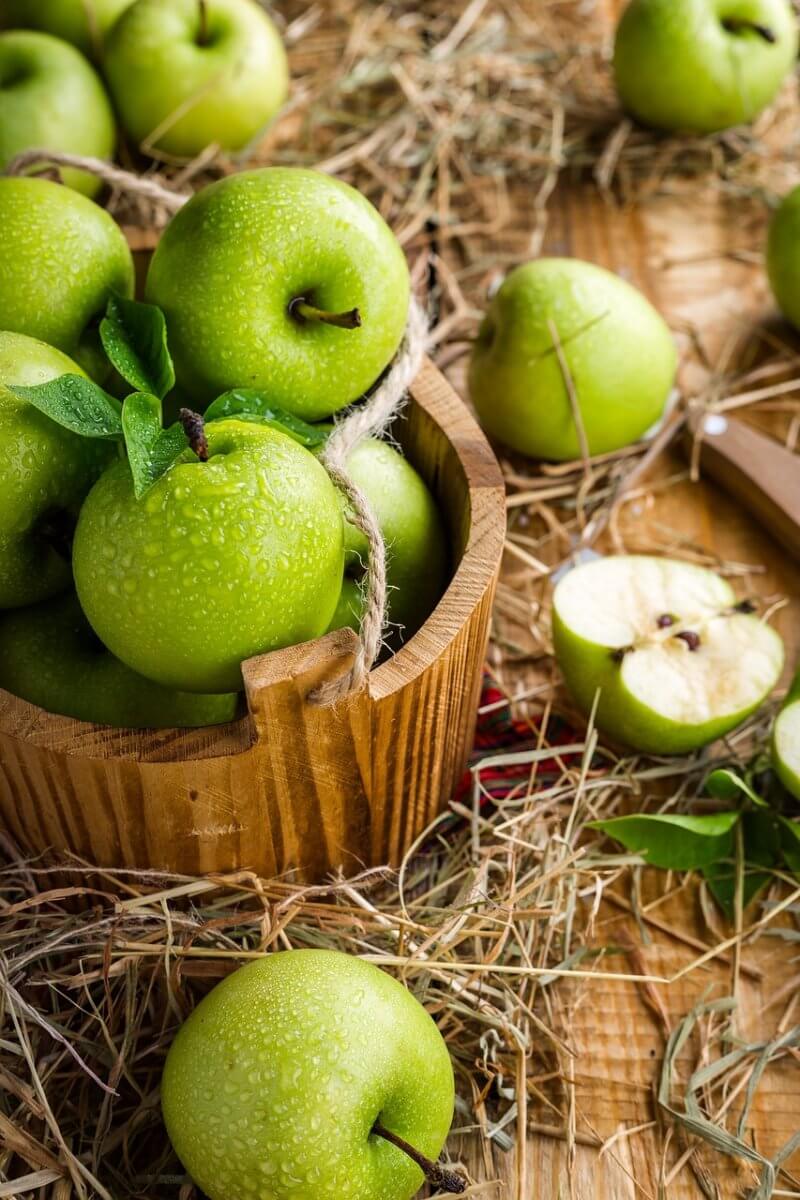
Celery
Substituting celery for zucchini is not a common substitution as the two vegetables have very different flavors and textures. Celery has a crunchy and mildly bitter taste, while zucchini has a milder, slightly sweet taste with a tender texture when cooked.
However, in some specific dishes, you can use celery as a creative alternative to zucchini, especially when the celery’s crunch and flavor can complement the overall dish. Here are some tips on how to do it:
- Consider the Dish: When substituting celery for zucchini, consider the type of dish you are making. Celery’s crunchy texture and unique flavor may work well in certain salads, soups, or stir-fries where a refreshing and slightly bitter element is desirable.
- Adjusting Flavors: Keep in mind that celery has a distinct taste, so you may need to adjust the seasonings and other flavors in the recipe to accommodate the flavor of celery.
- Texture Differences: Remember that celery will retain its crunch when cooked, which may not be suitable for recipes that specifically require zucchini’s tender texture.
- Quantities: The quantity of celery you use as a substitute will depend on the specific recipe and your taste preferences. You may need to experiment with the amount to achieve the desired balance.
- Cutting and Preparation: When using celery as a substitute for zucchini, consider how you cut or prepare it. For example, you can chop celery into small pieces or slices to match the size of zucchini pieces in the recipe.
- Complementary Ingredients: When substituting celery for zucchini, consider using other complementary ingredients to balance the flavors and textures in the dish.
It’s important to note that substituting celery for zucchini is a creative choice and won’t work well in all recipes. The taste and texture differences can significantly alter the final result. If possible, try to use other zucchini substitutes like yellow squash, eggplant, or carrots, which have more similarities in taste and texture to zucchini.
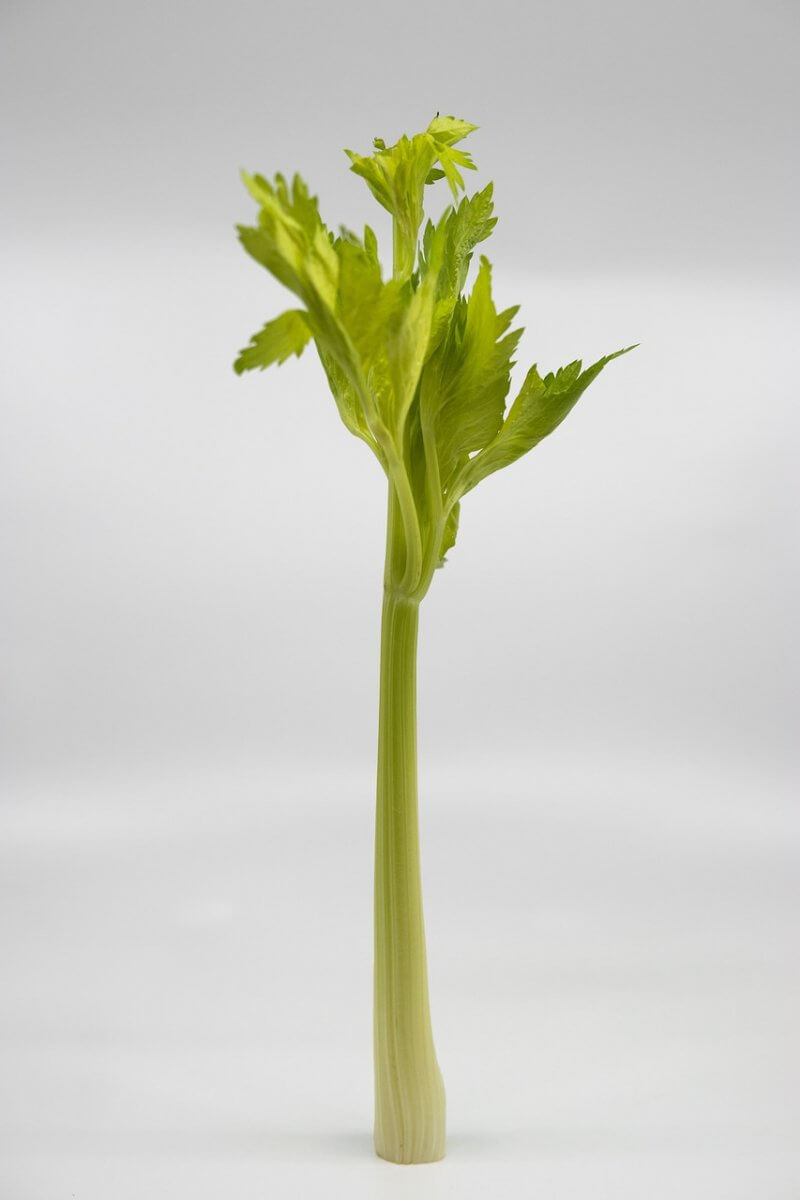
Beetroot
Substituting beetroot for zucchini is not a common substitution as the two vegetables have very different flavors, textures, and cooking properties. Beetroot has a sweet, earthy taste, and it is typically denser and takes longer to cook compared to zucchini.
However, in certain dishes where the earthy and sweet flavor of beetroot can complement the recipe, you can use it as a creative alternative to zucchini. Here are some tips on how to do it:
- Roasting or Grilling: Beetroot can be roasted or grilled similarly to zucchini, so you can use it in recipes that call for roasted or grilled zucchini. Keep in mind that beetroot will require more cooking time due to its denser texture.
- Adjusting Flavors: Be aware that beetroot has a distinct sweet and earthy taste, which can significantly impact the flavor of the dish. You may need to adjust the seasonings and other flavors to balance the sweetness.
- Texture Differences: Beetroot has a firmer and denser texture compared to zucchini, which has a tender texture when cooked. Depending on the recipe, this difference in texture might not be suitable.
- Cutting and Preparation: When using beetroot as a substitute for zucchini, consider how you cut or prepare it. For example, you can dice or slice beetroot to match the size of zucchini pieces in the recipe.
- Quantities: The quantity of beetroot you use as a substitute will depend on the specific recipe and your taste preferences. You may need to experiment with the amount to achieve the desired flavor and texture.
- Color Impact: Keep in mind that beetroot’s deep red color can add a vibrant and striking hue to the dish, which might be visually appealing in some recipes.
- Complementary Ingredients: When substituting beetroot for zucchini, consider using other complementary ingredients to balance the flavors and textures in the dish.
It’s important to note that substituting beetroot for zucchini is a creative choice and won’t work well in all recipes. The taste, texture, and cooking time differences can significantly alter the final result. If possible, try to use other zucchini substitutes like yellow squash, eggplant, or carrots, which have more similarities in taste and texture to zucchini.
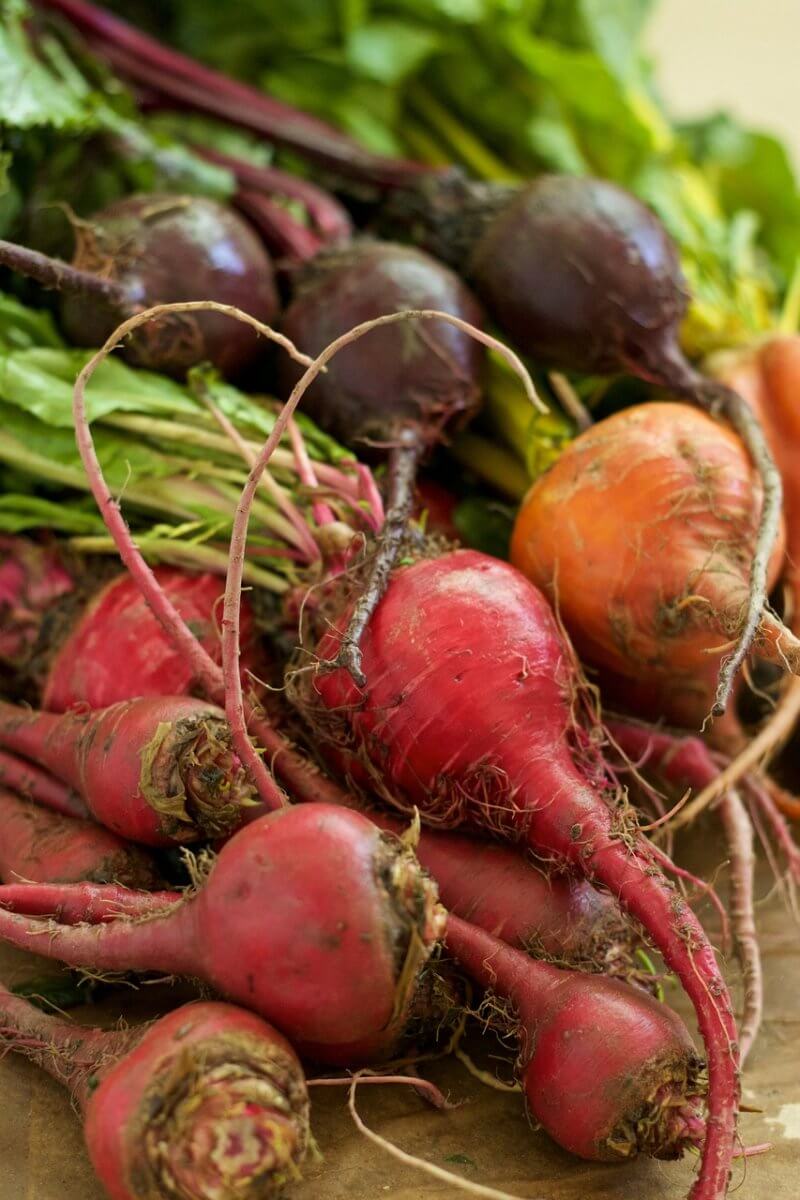
Parsley
If you want to substitute parsley for zucchini, it’s essential to understand that parsley is an herb, and zucchini is a vegetable with a different taste and texture. While you cannot directly replace zucchini with parsley in most recipes, you can use parsley in conjunction with other vegetables to enhance the flavor and add freshness. Here are some ways to use parsley alongside zucchini:
- Herb Garnish: Use chopped fresh parsley as a garnish for dishes that include zucchini. Sprinkle the parsley on top of zucchini-based recipes like sautés, soups, stews, or salads to add a pop of color and a fresh herbal flavor.
- Parsley Pesto: Make a parsley pesto and use it as a sauce or dressing for zucchini dishes. Parsley pesto typically contains parsley, garlic, olive oil, nuts (such as pine nuts or walnuts), and Parmesan cheese. Toss zucchini noodles or grilled zucchini with the pesto for a delicious and herbaceous twist.
- Herbed Zucchini Fritters: Combine shredded zucchini with chopped parsley, along with other herbs like dill or mint, to make zucchini fritters. The parsley will contribute to the overall flavor profile while adding a fresh and vibrant touch to the fritters.
- Herb-Infused Oil: Infuse olive oil with parsley and other herbs like basil, thyme, or rosemary. Use this herb-infused oil to drizzle over cooked zucchini for added flavor.
- Salads: Add chopped parsley to zucchini salads or pasta salads that include zucchini. The herb will enhance the overall taste and complement the other ingredients.
- Zucchini and Parsley Soup: Create a zucchini and parsley soup by blending cooked zucchini with fresh parsley, vegetable broth, and seasonings. The parsley will bring a unique herbal note to the soup.
Remember, while parsley and zucchini can be used together in various ways, parsley alone cannot replace zucchini’s unique taste and texture in most recipes. It is best to use parsley as a complementary herb to enhance the flavors of zucchini-based dishes. This will add a fresh and herbal element to the overall meal.
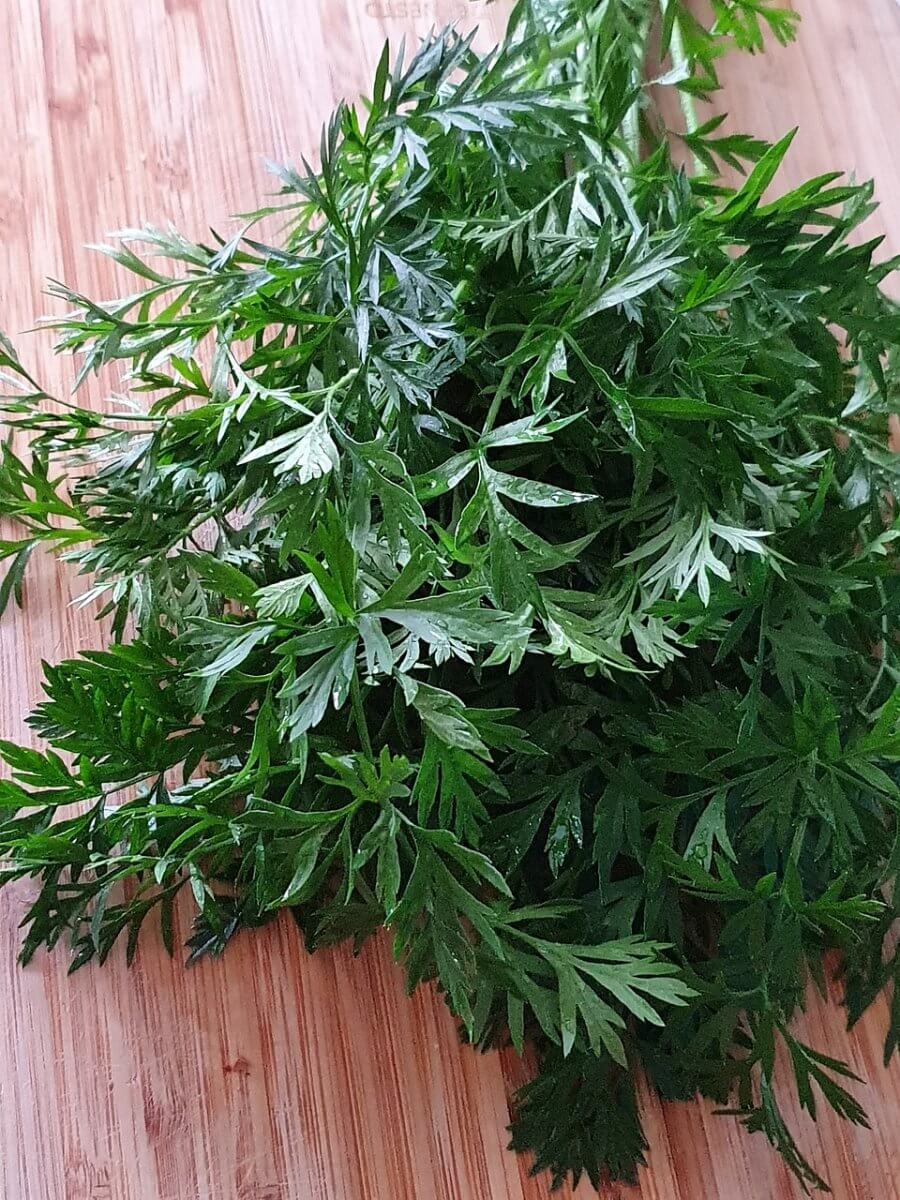
Bell Peppers
Substituting bell peppers for zucchini can work well in many dishes, as they both have a similar firm texture and can be used in a variety of cooking methods. However, it’s essential to consider the flavor differences between the two vegetables. Bell peppers have a sweet and slightly tangy taste, while zucchini has a milder, slightly sweet flavor. Here are some tips on how to substitute bell peppers for zucchini:
- Cooking Methods: Bell peppers can be used as a zucchini substitute in various cooking methods, such as sautéing, stir-frying, grilling, and baking. They will retain their crisp texture when cooked.
- Flavor Adjustment: Keep in mind that bell peppers have a sweeter taste compared to zucchini. If you’re substituting bell peppers for zucchini in savory dishes, you may need to adjust the seasonings and other flavors to balance the sweetness.
- Ratios: Consider the size and density difference between bell peppers and zucchini. You may need to adjust the quantity of bell peppers to match the volume of zucchini required in the recipe.
- Appearance: Bell peppers can add vibrant colors to the dish, which might be visually appealing. If the appearance is essential for the recipe, bell peppers can be an attractive substitute for zucchini.
- Cutting and Preparation: When using bell peppers as a substitute for zucchini, consider how you cut or prepare them. For example, you can slice or dice bell peppers to match the size of zucchini pieces in the recipe.
- Complementary Ingredients: Since bell peppers have a distinct flavor, consider using other complementary ingredients to balance the flavors and textures in the dish.
- Stuffed Peppers: If the recipe involves stuffing zucchini, you can also use bell peppers as a substitute. Stuff the bell peppers with your desired filling and bake until tender.
By following these tips, you can successfully substitute bell peppers for zucchini in various dishes. Remember to adjust the flavors, ratios, and preparation methods to suit your taste preferences and the specific recipe you’re making. Bell peppers can add a delightful sweetness and colorful touch to the dish while providing a similar firm texture to zucchini.
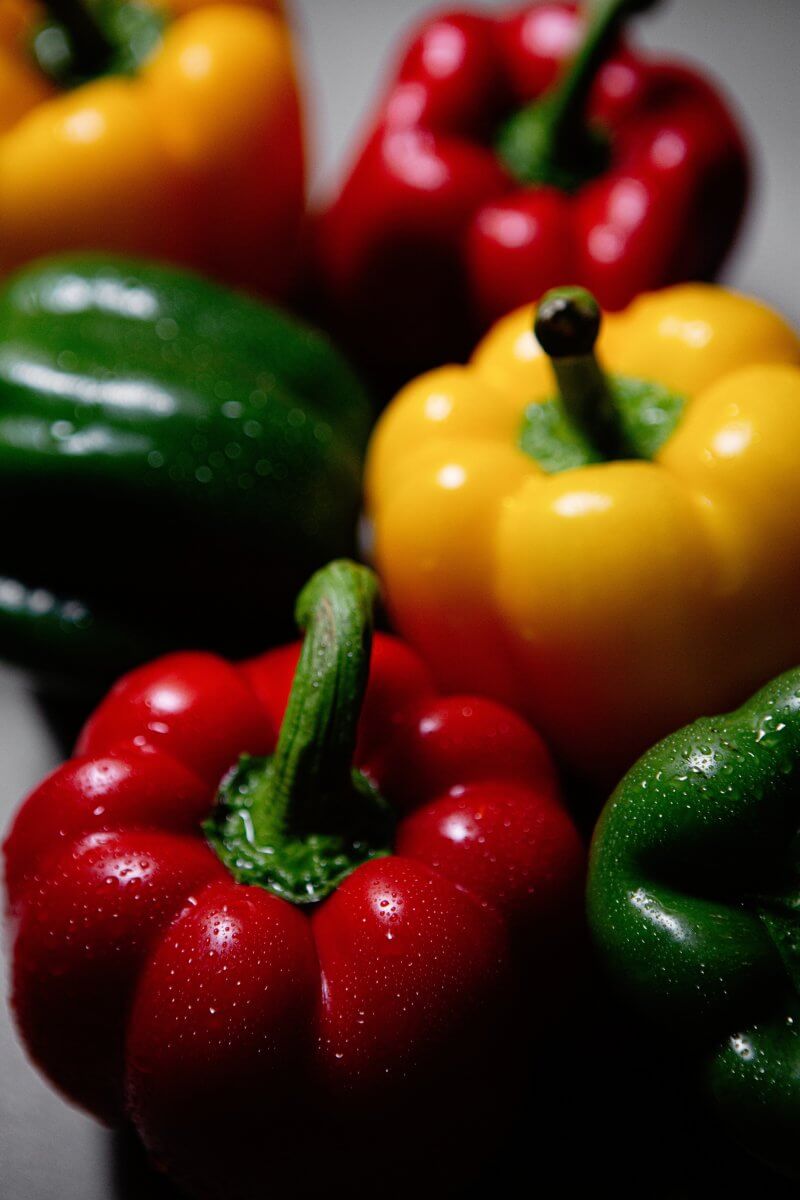
Sweet Potato
Substituting sweet potato for zucchini can work well in certain dishes, but it’s important to consider the flavor and texture differences between the two vegetables. Sweet potatoes have a sweeter taste and a denser texture compared to zucchini. Here are some tips on how to substitute sweet potato for zucchini:
- Cooking Methods: Sweet potatoes can be used as a zucchini substitute in various cooking methods, such as roasting, baking, boiling, or mashing. Keep in mind that sweet potatoes will take longer to cook than zucchini due to their denser texture.
- Flavor Adjustment: Sweet potatoes have a naturally sweet taste, which will differ significantly from the milder taste of zucchini. If you’re substituting sweet potatoes for zucchini in savory dishes, you may need to adjust the seasonings and other flavors to balance the sweetness.
- Texture Differences: Sweet potatoes have a firmer and denser texture compared to zucchini. This can be desirable in some recipes, but if the recipe requires zucchini’s tender texture, sweet potatoes may not be the best substitute.
- Cutting and Preparation: When using sweet potatoes as a substitute for zucchini, consider how you cut or prepare them. For example, you can dice sweet potatoes into smaller pieces or slices to match the size of zucchini pieces in the recipe.
- Baking and Casseroles: Sweet potatoes can work well as a substitute for zucchini in baked dishes and casseroles. For example, you can make sweet potato gratin in place of zucchini gratin.
- Stuffed Sweet Potatoes: If the recipe involves stuffing zucchini, you can also use sweet potatoes as a substitute. Cut the sweet potatoes in half, scoop out some of the flesh, and fill them with your desired stuffing before baking.
- Complementary Ingredients: Since sweet potatoes have a distinct flavor, consider using other complementary ingredients to balance the flavors and textures in the dish.
It’s important to note that substituting with sweet potato is a creative choice and won’t work well in all recipes. The taste, texture, and cooking time differences can significantly alter the final result. If possible, try to use other zucchini substitutes like yellow squash, eggplant, or bell peppers. These ingredients have more similarities in taste and texture to zucchini.
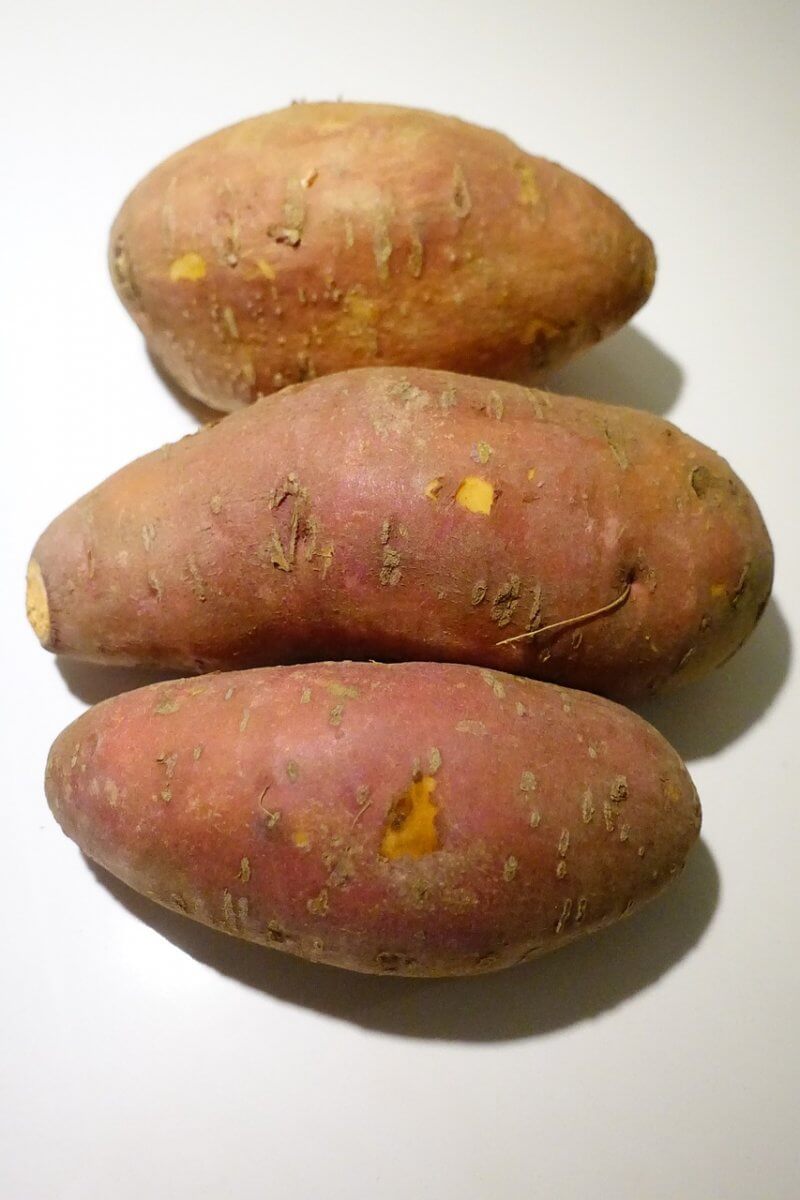
How do you grow Zucchini?
We gave you a link earlier so you could purchase zucchini seeds. Now we will look at how to actually grow them!
Growing zucchini can be a rewarding experience, and you will be pleased to hear it’s relatively easy. Have you a sunny garden or a space with good sunlight? Don’t worry if you don’t as you can also grow zucchini in pots or containers! While zucchini plants are naturally large and sprawling, many modern varieties have been bred to be more compact, making them suitable for container gardening. Growing zucchini in pots has several advantages, such as allowing you to control the soil quality, easier pest management, and the ability to move the containers to maximize sunlight.
Growing zucchini outdoors:
- Choose a Location: Zucchini plants require full sunlight, so pick a spot in your garden that receives at least 6-8 hours of direct sunlight per day. Ensure the area has well-draining soil to prevent waterlogging, as zucchinis don’t like to sit in water.
- Prepare the Soil: Zucchini plants prefer fertile, nutrient-rich soil. Before planting, amend the soil with compost or well-rotted manure to improve its fertility. You can also add some organic matter to improve water retention and drainage.
- Planting: Zucchini can be grown from seeds or seedlings (transplants). If you start from seeds, sow them directly into the soil in spring after the last frost date in your area. Plant the seeds about 1 inch deep and space them 2-3 feet apart. If you’re using seedlings, transplant them carefully to avoid disturbing the roots.
- Watering: Keep the soil consistently moist, especially during the early growth stages. Zucchini plants require regular watering, especially during dry spells. However, avoid overwatering, as it can lead to root rot. Using mulch around the plants can help retain moisture and reduce weeds.
- Fertilizing: Zucchini plants are heavy feeders, so they benefit from regular fertilization. Use a balanced fertilizer or compost tea every two to three weeks during the growing season.
- Pruning: Zucchini plants can become quite large, so consider pruning to encourage better air circulation and make harvesting easier. Pinch off the tips of the vines once the plant starts to develop fruit, and remove any dead or damaged leaves.
- Pest and Disease Management: Keep an eye out for common garden pests like aphids, squash bugs, and cucumber beetles. Also jkeep an eye out for diseases like powdery mildew. If you notice any issues, take appropriate measures like using insecticidal soap or natural remedies to protect your plants.
- Harvesting: Zucchini plants typically produce fruit in about 35 to 60 days after planting. Harvest zucchinis when they are about 6-8 inches long and still tender. Use a sharp knife or pruning shears to cut the fruit from the vine, leaving a small stem attached.
- Continuous Harvesting: Zucchini plants can produce quite a lot of fruit throughout the growing season. Continuously harvest ripe zucchinis to encourage more fruit production. If you allow some zucchinis to grow too large on the vine, it may slow down the production of new fruits.
By following these steps, you can enjoy a bountiful harvest of zucchini in your garden. Remember to rotate your crops each year to prevent soil depletion and reduce the risk of pest and disease buildup. Happy gardening!
If growing them in pots you need to:
You can grow zucchini in pots or containers, making it a great option for people with limited garden space or those who want to grow vegetables on a balcony or patio. Here are some tips for successfully growing zucchini in pots:
- Select the Right Pot: Choose a large container with a capacity of at least 5 gallons (19 liters) or more. Zucchini plants have extensive root systems, and they need enough space to grow and develop properly.
- Use Quality Potting Mix: Fill the pot with a good quality potting mix that is well-draining and rich in organic matter. Avoid using garden soil in pots, as it may not provide the right drainage and aeration needed for container plants.
- Position and Sunlight: Place the pot in a location that receives full sunlight for at least 6-8 hours per day. Zucchini plants thrive in sunny conditions and won’t perform well in shady spots.
- Watering: Container-grown plants may dry out more quickly than those in the ground. Keep the soil consistently moist, but not waterlogged. Check the soil regularly and water when the top inch feels dry to the touch. Applying mulch on the soil surface can help retain moisture.
- Fertilizing: Zucchini plants in pots will benefit from regular fertilization since the nutrients in containers can get depleted faster. Use a balanced fertilizer or compost tea every two to three weeks during the growing season.
- Support: Some zucchini varieties can grow quite large and heavy, so consider providing support to the plants. You can use stakes or small trellises to help support the vines and prevent them from sprawling all over.
- Pollination: Zucchini plants require pollination to produce fruit. In outdoor gardens, bees and other pollinators usually do this job naturally. However, if you’re growing zucchini on a balcony or in an area with limited pollinators, you might need to hand-pollinate the flowers. Simply transfer pollen from the male flowers to the female flowers using a small brush or cotton swab.
- Pest and Disease Management: Keep an eye out for pests and diseases, even in containers. Pests like aphids and whiteflies can still be a problem. Use natural remedies or insecticidal soap to manage them.
With proper care and attention, you can enjoy a bountiful harvest of zucchinis from your containers. Just make sure the plants have enough space, sunlight, water, and nutrients to thrive.
Summary for Zucchini substitutes
Okay – that’s you all sorted with suitable substitutes for zuchinni.
We hope you have found this article useful. With 10 substitute options listed hopefully you will never have to worry the next time you run out of zucchini. And with the additional information of how to grow your own, you should always have a fresh supply of zucchini!
Be adventurous in the kitchen and see which zucchini substitute is best for you.
We have gathered together a lot more facts on ingredients such as herbs, spices, oils, nuts, etc. if you would like to learn some more.
